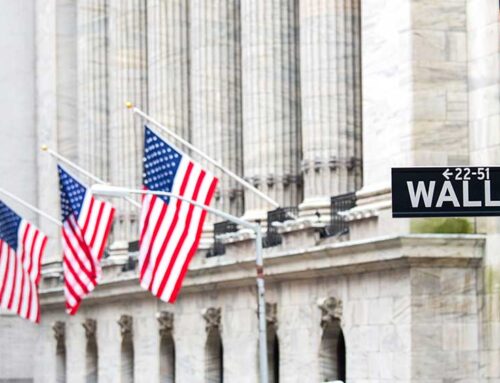What Trump’s tariffs mean for green energy investors
April 11, 2025

It’s impossible to predict the next twists and turns in the tariff war that Donald Trump has unleashed between the US and China. But it feels very much like we are living through a major structural shift in the global economy, with a large-scale sundering of ties between its two biggest actors.
In today’s newsletter we take a look at what all this means for companies in the clean energy sector — and their shareholders.
energy transition
Chinese green energy stocks outperform US peers as trade war intensifies
Donald Trump’s hiking of tariffs on Chinese imports to extraordinary levels — even as he issued a partial reprieve to other nations — has dealt a hammer blow to trading links between the world’s two largest economies.
On Tuesday, Trump raised tariffs on Chinese imports to 104 per cent. On Wednesday he made it 125 per cent. On Thursday the White House “clarified” that the rate was now in fact 145 per cent.
Yet since Tuesday’s announcement, the CSI New Energy index of Chinese clean energy stocks has risen by more than 3 per cent, slightly outpacing a 2.9 per cent rise in the wider Shanghai market.
That fits with my conversations this week with green energy investors, who stressed the still strong growth prospects for Chinese clean energy both in its domestic market and overseas, even with a collapse of exports to the US that were already highly constrained. But for investors in US clean energy companies, the consequences of the Trump tariffs may prove more serious.
True, Chinese shares in clean energy and beyond have still taken a bruising, along with most of the global equities market, amid the turmoil of the past two weeks. And the bounce on Chinese stock exchanges has clearly been helped by interventions from the “national team” of state-owned financial entities.
Even so, the modest rally in Chinese green tech stocks — driven by the reduction of proposed US tariffs on other nations, lightening the shadows hanging over the world economy — highlights how these companies stand to benefit from expanding global demand, even if they’re largely shut out from the US.
For Chinese electric vehicle producers, the impact of the new tariffs was “negligible, because they were already effectively blocked from that market” through hefty tariffs and other restrictions imposed by Joe Biden’s administration, noted Deirdre Cooper, head of sustainable equity at asset manager Ninety One.
Some other companies in China would take a larger hit, she added — notably those providing components to the US renewable power sector. “The first thing we did,” after Trump’s re-election was to sell a position in Sungrow, a Chinese company that makes inverters for solar power plants and made a large proportion of its sales to US customers, Cooper said.
Another significant area of Chinese exports to the US is lithium-ion batteries for electric cars and grid-level storage, the latter of which is increasingly important as utilities seek to integrate intermittent solar and wind power. CATL, the largest such battery maker in the world, has been hurt by the new tariffs, with its share price falling 10 per cent since Trump’s initial “liberation day” announcement last week.
But the growth in clean energy investment in China and other export markets would offset the lost US sales, argued Jon Forster, senior portfolio manager of the Impax Environmental Markets Investment Trust, which invested in CATL last year, when trade tensions were already serious.
“We’d taken account of the policy risk and assumed that its US business went to zero,” Forster said. “But when we modelled it all out, it seemed to us that this is a business that can thrive on the basis of China and Europe.”
The US is a “niche market” for Chinese clean tech exporters, according to a recent analysis of UN Comtrade data by the Centre for Research on Energy and Clean Air. It found that while 15 per cent of overall Chinese exports went to the US, the figure was only 4 per cent for the solar, wind and electric vehicle sectors. Developing economies accounted for 70 per cent of export growth in these categories from 2021 to 2024, it found.
Meanwhile, China’s domestic investment in the energy transition continues to surge, rising 20 per cent to $818bn last year, according to BloombergNEF. “We’ve increasingly been looking at companies focused on [low-carbon] infrastructure within China, which continues to get built out,” said Ulrik Fugmann, co-head of the environmental strategies group at BNP Paribas Asset Management.
As in other sectors, it’s far from clear that foreign exporters’ losses will be US companies’ gain. Among utilities seeking to expand in renewable power — which is often the cheapest source available — the surge in the cost of batteries would have a “devastating” effect on stationary storage investment, given the US’s limited domestic production, said Antoine Vagneur-Jones, an analyst at BloombergNEF. A further blow would come from increases in the cost of solar cells, another area where the US has relatively little production of its own.
The largest US solar manufacturer, First Solar, enjoyed a share price bounce from Trump’s initial tariff announcement last week, although it’s since more than given up those gains. Other US clean energy companies that should stand to benefit from the exclusion of Chinese competitors have also suffered share price declines.
Nextracker, for example, which makes “trackers” that keep solar panels tilted towards the sun, has fallen 12 per cent since April 1, against a 6.5 per cent fall for the S&P 500 index. Fluence Energy, which makes battery storage systems, is down 20 per cent.
A major problem for many US clean tech manufacturers is the surging cost of tariff-hit components from China, which dominates many parts of the green energy supply chain.
The share price falls also reflect concerns that, amid the economic turmoil and uncertainty stemming from Trump’s erratic policy moves, utilities and other companies will defer investment decisions on clean energy projects. “Uncertainty is the foe of long-cycle investment, which is what energy infrastructure investing is,” said Tarek Soliman, an executive director at Calvert Research and Management.
As the wider impact of the tariff increases kicks in, many economists expect the US to slide into recession this year. Some investors I spoke to are already looking ahead to the fiscal and monetary stimulus that may then be needed to dig the economy out of a rut. With its unusual sensitivity to borrowing costs, the renewable energy sector would be a prime beneficiary of rate cuts, Cooper noted. “Oddly enough, the times that the transition has accelerated the most have been when we’ve come out of crisis,” she said.
Smart reads
Slippery slopes US Midwestern ski resorts are turning to technology to cope with climate change.
Strength in numbers The case for a multilateral European defence bank.
Search
RECENT PRESS RELEASES
Related Post




